Warren Feeney – 9 July, 2012
It is difficult not to consider that Bond is making tangible the secret desire of every frustrated ceramicist or potter, dreaming of the joy or the nightmare in which everything they have crafted and resolved is dismissed by the cloistered environment of the art gallery and falls to its doom on the gallery floor. There is something gleeful, perverse and very human about Bond's eulogy to his practice - a knowing awareness of his own place in the grand scheme of things.
Right now Christchurch residents must be world-weary from feeling the gap between their lives and the forces of nature. It’s a divide that maintains a pervasive and continuing presence, evident in the magnitude 4 earthquake that hit the city the same day that I visited The National to view Tony Bond’s Nudge. And it equally seems apparent in the subtexts and implicit narratives in - not only Nudge - but in exhibitions by local artists featured in the Christchurch Art Gallery’s off-site Outer Spaces on Madras Street over the past four months.
Culture and nature distinctly dislocated one from the other. For example; Julia Morison’s Meet me on the Other Side offered up the silt and residue of the natural world caged and by no means domesticated - far from it. Morison’s mutated liquefactions seemed like the prodigy of Ridley Scott’s aliens incarnate, in control of the remnants of abandoned domestic interiors. More recently, Aaron and Hannah Beehre’s Waters Above Waters Below turned the mundane reality of a view of Christchurch into something that was a genuinely ‘new normal.’ A panoramic view from the window of the gallery, looking onto Madras Street and turned on its head. Birds flew upside down below and rooftops hung from above pointing downwards, permanently suspended in space.
So Tony Bond’s Nudge is in good company. An exhibition of 27 objects identified as Formunculae and meticulously crafted from ceramic, wood and metal assert their presence as evidence of humanity’s ability to shape, form, define and make sense of the world. In the quality of their making they seem to almost represent an act against nature. Yet in Bond’s case, he argues not so much for a war of attrition, but rather amusement with the possible reality that humanity and nature might be okay about not being comfortable with one another.
Nudge represents a conflict of interests and agendas that is on many levels, as decidedly user-friendly as it is anxious or unsettling. The biomorphic objects Bond creates appear to be caught in an ongoing state of mutation and genetic evolution that could have stepped out of a painting by Miro, a Felix the cat cartoon or a toy box in a child’s bedroom. Yes, they are somewhat odd and alienating but they are also something else; strangely familiar and conceived on a scale that is entirely human, objects that you can comfortably hold in your hand.
And there’s a humour about the artist making such things. Bond has sited these works across two gallery walls, fixing them to individual shelves, tilting at an angle of 30 degrees and pointing to the floor. These are ceramic objects that anticipate and embrace their pending demise on the gallery floor. It is difficult not to consider that Bond is making tangible the secret desire of every frustrated ceramicist or potter, dreaming of the joy or the nightmare in which everything they have crafted and resolved is dismissed by the cloistered environment of the art gallery and falls to its doom on the gallery floor. There is something gleeful, perverse and very human about Bond’s eulogy to his practice - a knowing awareness and acceptance of the reality of his own place in the grand scheme of things.
Bond’s objectivity - and his objects - deal to the risk of all possibilities of thinking about - and making art. It’s a smart and considered metaphor shared by the artist’s amusement with the notion that humanity may be neither for nor against nature - just in the process of getting used to it. What works best about Nudge is the way it moves so effortlessly between understated commentary on the state of our place in the universe and an admission and confession about a reason for making art. Nudge is a rare creature, an exhibition that prods the viewer into recognising the authority and potential for objectivity and rationalism to elicit both humour and wonder.
Warren Feeney
Recent Comments
Erin Driessen
I like the way you describe the tension, Warren. While we know they're made of ceramic, there's a whimsy to ...
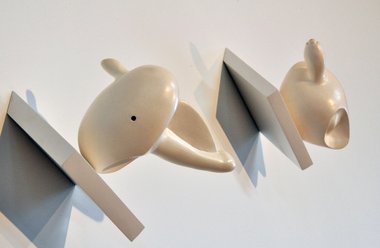

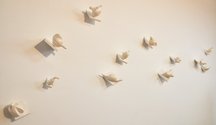
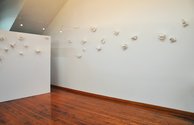
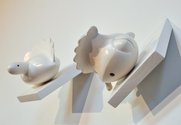
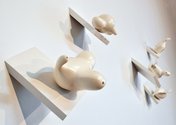
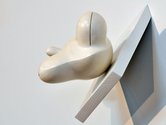
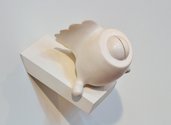
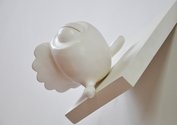
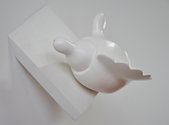
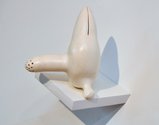
 Two Rooms presents a program of residencies and projects
Two Rooms presents a program of residencies and projects Advertising in this column
Advertising in this column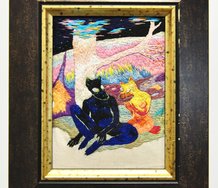
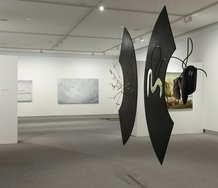
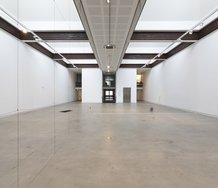

This Discussion has 1 comment.
Comment
Erin Driessen, 1:32 p.m. 9 July, 2012 #
I like the way you describe the tension, Warren. While we know they're made of ceramic, there's a whimsy to their resemblance to inflatable bath toys or balloons - like we might get an unexpected surprise when they fall to the floor and don't actually break.
They remind me of Laurent Craste's larger ceramic vases with axes sculpted into them. Beyond the nature-culture dichotomy, Bond's pieces also have that tension between how humans can create and destroy simultaneously.
Participate
Register to Participate.
Sign in
Sign in to an existing account.